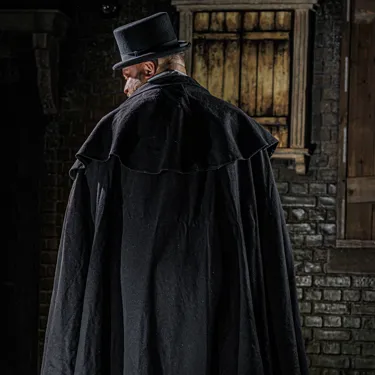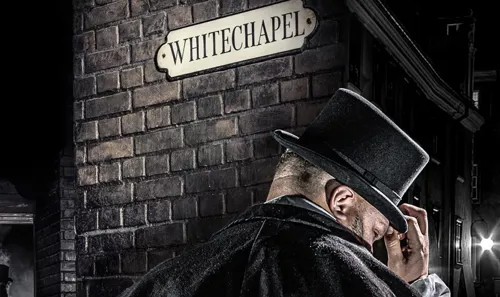The Forgotten Voices of Whitechapel: The Victims of Jack the Ripper
- Monday July 21st 2025

Everyone knows the name Jack the Ripper, but what about the women at the heart of the story? Step beyond the myths and learn more about the real people whose lives were lost in Victorian Whitechapel. Their names, their stories, and their city live on…
Meet the ‘Canonical Five’
When we hear the name Jack the Ripper, we immediately think of shadowy alleyways, fog-filled streets, and one of history’s most infamous unsolved cases. But in the frenzy to unmask a faceless killer, the people most central to the story, the women, are too often left behind.
Today, we shift the focus from mystery to humanity. These are the stories of Mary Ann Nichols, Annie Chapman, Elizabeth Stride, Catherine Eddowes, and Mary Jane Kelly, women known collectively as the “canonical five.” But they were never just victims. They were daughters, mothers, friends. They lived lives filled with joy, hardship, and resilience in the heart of Victorian London.
Life in Whitechapel: Victorian London’s Harsh Reality

To understand the victims of Jack the Ripper, we must first understand the world they lived in. Victorian London was a city of extremes, with wealth and poverty side by side. The East End, particularly Whitechapel, was overcrowded, poverty-stricken, and lawless. For many women, especially those without family or steady work, survival meant living night to night in dangerous lodging houses or on the streets.
There were no safety nets, no social care systems. Turning to casual sex work was often a last resort, an act of desperation, not choice. This harsh truth connects each of the five canonical victims of Jack the Ripper: they lived hard lives in an unforgiving world, before their lives were snatched away from them.
Want to experience the foggy gas lit streets of 1888 Whitechapel for yourself? at the London Dungeon, transport back to the cold streets of Mitre Square and smell the fear in the air as a murderer is on the loose...
Click here to learn more.
Mary Ann Nichols – "I Must Get My Doss Money"
Murdered: 31 August 1888
Mary Ann Nichols, known as Polly, was 43 years old when her body was found in Buck’s Row, her throat slit so violently it nearly severed her head. Like many women in Whitechapel, she had struggled with alcoholism and poverty, moving from workhouses to lodging houses.
On the night of her murder, Polly had just been turned away from a doss house for not having the fourpence needed for a bed. Her friend Emily Holland tried to convince her to come home with her, but Polly replied, “I must get my doss money somehow.” Hours later, she was found dead.
Annie Chapman – A Life of Loss
Murdered: 8 September 1888
Annie Chapman was 47 when her mutilated body was discovered in Hanbury Street. Recently separated from her husband and living alone, Annie suffered from chronic illness and alcoholism. She earned money through crochet work, selling flowers, and sometimes through prostitution.
She met her friend Amelia Palmer the day before her death and mentioned being too sick to work, but said she still needed to earn her keep. That desperation led her back into the night. By dawn, she was dead… her body horribly mutilated and her organs removed.
Elizabeth Stride – The Unfinished Murder
Murdered: 30 September 1888
Known as "Long Liz," Elizabeth Stride was 45 and originally from Sweden. She had worked in domestic service, married, and later found herself alone again, struggling to survive in London’s East End. On the night she died, she was seen by several witnesses, possibly in distress.
At 12:45 am, she was seen being attacked on Berner Street. Just fifteen minutes later, her body was found, but unlike other victims, she had not been mutilated. Many believe the Ripper was interrupted before he could complete his gruesome ritual.
Her death became known as part of the “Double Event,” as another victim would be killed shortly after.
Catherine Eddowes – A Spirited Fighter
Murdered: 30 September 1888
Only 45 minutes after Elizabeth was killed, Catherine Eddowes was found in Mitre Square. Born in Wolverhampton, Catherine had moved to London with her partner John Kelly and faced many hardships, including losing her parents at a young age and separation from her children.
That night, she had been arrested for drunkenness but was released from the station just before her murder. She was last seen speaking to a man near Mitre Square. Her injuries were the most horrific yet… her face mutilated, and her kidney and uterus removed.
Her funeral drew a large crowd, with her four sisters walking behind the carriage. The tragedy of her death left a lasting mark on the city.
Mary Jane Kelly – The Final Victim
Murdered: 9 November 1888
Mary Jane Kelly, the youngest of the victims, was just 25. Born in Ireland, she moved to London and worked in various brothels before settling in Whitechapel with her partner, Joseph Barnett.
After losing their lodgings due to lack of rent, Mary returned to sex work to survive. The night before her death, she was seen with a mysterious man. The next morning, her landlord’s assistant found her room locked, and what lay inside shocked even the most hardened officers. Mary had been mutilated beyond recognition. Her face was almost entirely destroyed, her organs removed, and the scene was so horrific it became one of the earliest crime scenes ever photographed.
The Investigation That Failed Them

The police investigation into the Whitechapel Murders was hampered by outdated techniques, lack of resources, and public pressure. Scotland Yard received hundreds of letters claiming to be from the killer, but one signed "Jack the Ripper" captured the public imagination and gave the killer his infamous name.
The public grew furious at the failure to catch the murderer. Newspapers mocked the police, and fears of wider social unrest began to bubble. The lead investigator, Sir Charles Warren, eventually resigned, his credibility tarnished.
Despite dozens of suspects over the years, including Montague Druitt, Thomas Cutbush, and Aaron Kosminski, no one was ever convicted, and the case remains unsolved to this day.
Why Their Stories Matter Today
The women known as Jack the Ripper’s victims were not nameless "prostitutes," as they are so often described in history books. They were complex individuals with families, hopes, and histories. Women shaped by their time but also failed by it.
Their murders prompted national conversations about poverty, women’s rights, and urban living conditions. The tragedy of their deaths contributed to early movements for social reform and public health.
Even today, over 130 years later, the legacy of these women continues to resonate.
Scream through the summer at the London Dungeon

At the London Dungeon, step into the shadowy alleys of 1888 Whitechapel and uncover the chilling world of Jack the Ripper. In an even darker and scarier experience than before with a chilling new take on the famous Whitechapel murders. Deep in the heart of the fog and fear, you’ll hear not just the whispers of a killer but the stories of those whose lives were caught in the darkness.
Learn more about the women behind the headlines as you journey through our immersive show, where Victorian London comes to life in all its eerie detail…
Do you have what it takes to face the shadows of London’s darkest chapter?